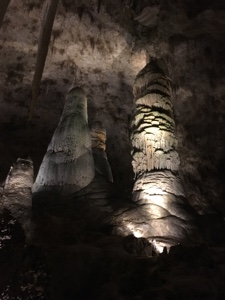 |
| Front row: Megan, Sharon, Cindy, Fred; Middle row: Joyce, Carlene, Dale, Paula, Lu, Sue; Back row: Rob, Kurt, Ken, Tom, Joe, Tim, Randy, Don |
It's been a busy week! Working 8:00 a.m. to 3:30 p.m., Tim and I were at a week-long Habitat for Humanity build in Santa Fe, New Mexico.
 |
| Clockwise from bottom left, clockwise: Dale, Paula, Kurt, Joe, Tom, Tim, Megan |
Even though our time together was short, our team of 15 Care-A-Vanners from Texas, California, Colorado and Utah really bonded.
 |
| Left column: Team leaders Fred Winslow and Sharon Adair Middle column: Sue, Randy, Carlene Right column: Don, Lu, Ken |
Perhaps that was due in large part to our team leaders, Fred Winslow and his wife Sharon Adair. Both are retired Methodist ministers with a talent for bringing people together.
 |
| Morning Devotions |
Several volunteers led our morning devotions. Each one touched my heart, turning my thoughts towards God and how we are to be His servants. It was a good way to start the day.
 |
| Tim |
Tim did something different every day on this build, from cutting blocking for drywall, to installing locks on the doors, to putting up drywall on ceilings, to driving a bobcat to help form a concrete walkway.
I, on the other hand, did what I do best--I painted.
 |
| The Painting Crew: Randy, Lu, Carlene, Ken and Cindy |
When Luce, the homeowner, arrived to contribute her sweat equity, she realized the paint we were using was not the color she had chosen. Luckily, we'd only begun so it was easy to paint over the sections we'd started with her choice.
Speaking of colors, check out the ladies port-a-potty! This commode came complete with a mirror inside. It was a HUGE hit with the women on our team.
Given that Santa Fe has a Residential Green Building Code, it's not surprising that the construction techniques used here were the most energy efficient we've seen.
 |
| Rob |
Rob, our site construction manager, was terrific! He attended our orientation meeting last Monday evening and gave us more safety training than we had previously encountered. On our first day of the build, he walked us through the properties, explaining the energy saving construction techniques used on each.
 |
| Homeowner Bree, mother of two children, works two jobs to make ends meet. On the first day of our build, I helped seal her concrete floors. |
Radiant heating systems underneath polished concrete floors, windows with southern exposure, higher insulation requirements and more give the new Santa Fe Habitat-built homes a much lower energy usage rate. However, those were not the only environment-conscious efforts used.
 |
| The students of YouthBuild, a program for students who need a different approach to education, helped landscape Raoul's home. |
The four homes we worked on were in a subdivision that allows homeowners to use only drip irrigation on landscaping every four days. The faucets on the outside of the homes didn't even have a handle to turn the water on. Definitely water use conscious!
 |
| Clockwise from bottom left: Homeowner Luce and a family member; Sue and Randy show off their paint speckled hands; Lu and Carlene; assistant site manager Alex and Fred; Sue and Paula |
But what I enjoyed the most were our daily wrap-up sessions. That was when Rob gave us the question of the day, asking us to reflect upon the times when we learned something interesting about our fellow workers or saw someone exhibit kindness or good safety. He also asked us to name one of our hobbies. All of this contributed to my feeling of a greater sense of connection between our team.
Camping as we did at the rodeo grounds was a barebones experience, but fun!
 |
| Ladies Barrel Racing The John Deere zamboni resurfaces the arena while Sue, Lu, Carlene and Ken watch. |
Every Wednesday night there is a ladies barrel-racing competition. We enjoyed watching the competition. Our campsites at the rodeo grounds had full hookups of water, sewer and electric but only 30 amps of juice. That meant I needed to watch the electricity usage carefully before I turned on another appliance. No washing clothes this week! Yippee!
 |
| Joe, Don, Lu, Tim, Ken, Sharon, Randy, Sue, Paul and Paula |
At the conclusion of our last day on the job site, Rob gathered us together in the house that had been framed and gave each of us a black marker, telling us to sign our work with messages and prayers for the family that would live there. Even though these messages will soon be covered up by drywall, this house has been blessed. It was a meaningful moment for all of us.
We had a great time! We'd like to return next year with the same group of people, if they are free! Until then, the Santa Fe Habitat for Humanity will undoubtedly continue to build.








































